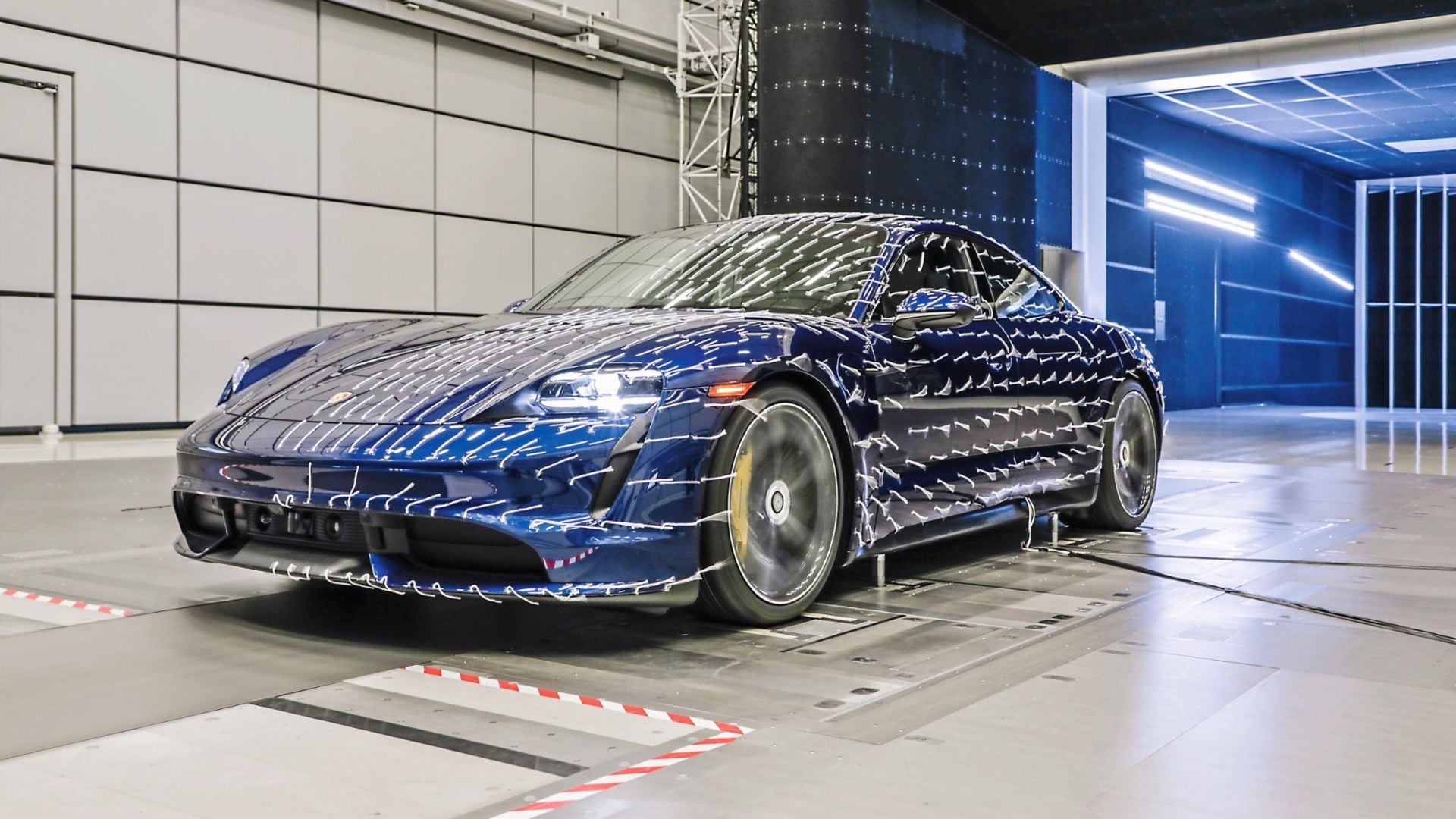
There’s more to design than meets the eye. Aside from meeting aesthetic demands, it likewise delivers outstanding aerodynamics—which accounts for minimizing noise emission, reducing drag and wind noise, and making sure the vehicle meets as little resistance from the air as possible.
Because of its importance, manufacturers have been optimizing aerodynamics for decades—and with the rise of e-mobility, the latest units are leaping at the Cd value. Porsche Engineering says its potential is vast, and new development methods alongside active aerodynamic measures present promising improvements.
How Aerodynamic Drag Took Center Stage
The Cd value or drag coefficient of vehicles became a buzz among car drivers over forty years ago. Efficiency became a high selling point due to the oil crises of 1973 and 1979. At higher speeds, the air resistance or aerodynamic drag plays a crucial role in fuel consumption. Thus, the frontal area and Cd value was given focus since they determine a car’s aerodynamic drag—and the principle, “The smaller, the better” was applied.
The typical wedge shape with a round front and angular rear became a hit since the 1980s in order to lessen the suction behind the automobile. Sharp edges break the flow off in a targeted manner, reducing the negative pressure—which eventually minimizes air resistance.
The Next Leap in Aerodynamics
With the transition to electromobility, efficiency has achieved a more impressive level.
A vehicle with a combustion engine has a center tunnel in the underbody, and an exhaust system which has to be cooled by ambient air. As a result, this irregular surface generates air vortices and upsurges driving resistance. On the other hand, the battery of an electric car sits between the front and rear axles, and since the underside is smooth, good aerodynamics is promoted.
Another advantage presented by e-mobility is the lower heat generation of motors, which means less energy is dissipated through the radiator. Thus, zero to minimal airflow is required through the engine compartment, in turn reducing the air resistance of e-vehicles.
Some features in electric cars even actively intervene depending on the driving situation, so that they are referred to by experts as “active aerodynamics.” These include retractable spoilers, air-spring chassis that lower the car at high speeds, and individually controllable cooling air shutters which ensure that only the required amount of air is routed through the brake discs and radiators.
By building up their expertise in function and software development, many modern e-vehicles, such as the Porsche Taycan, are already using these technical capabilities. With a Cd value of 0.22, the Taycan is miles ahead in terms of aerodynamics.
A Glimpse at the Future of Aerodynamics
In the future, active aerodynamics measures could play an even greater role, and could significantly change the appearance of a car while driving.
The possibility of lessening the Cd value at specific points in the car body through the systematic introduction of vibrations is being looked into by researchers, as well. Great progress in simulations is being made in order to assess how the ideas of engineers and designers affect the aerodynamics of new vehicles. Not to mention, Porsche Engineering is working on using artificial intelligence methods for test optimization.
The transition to e-mobility has definitely opened exciting doors of opportunities for the creation of vehicles that will astound us anew.